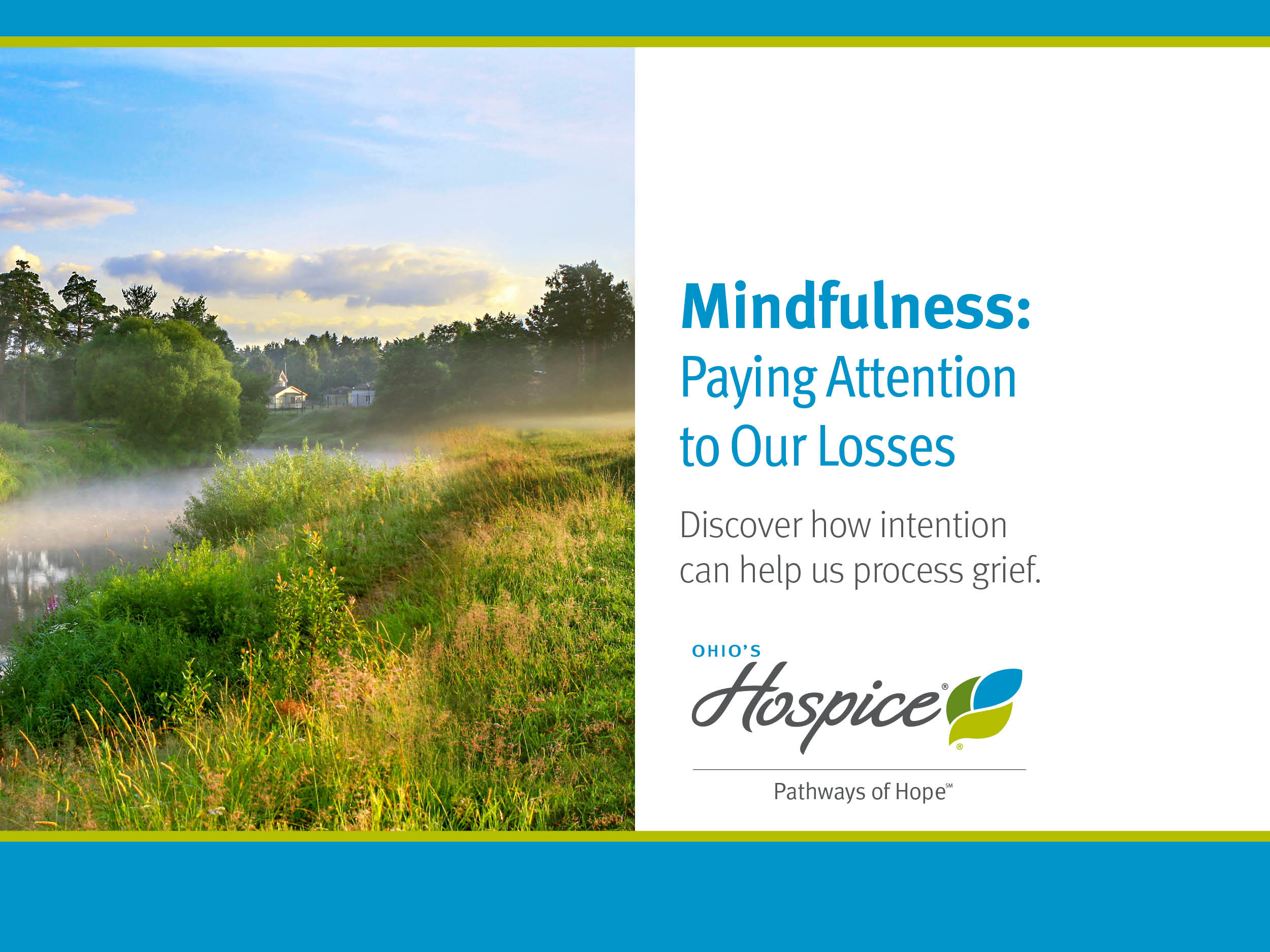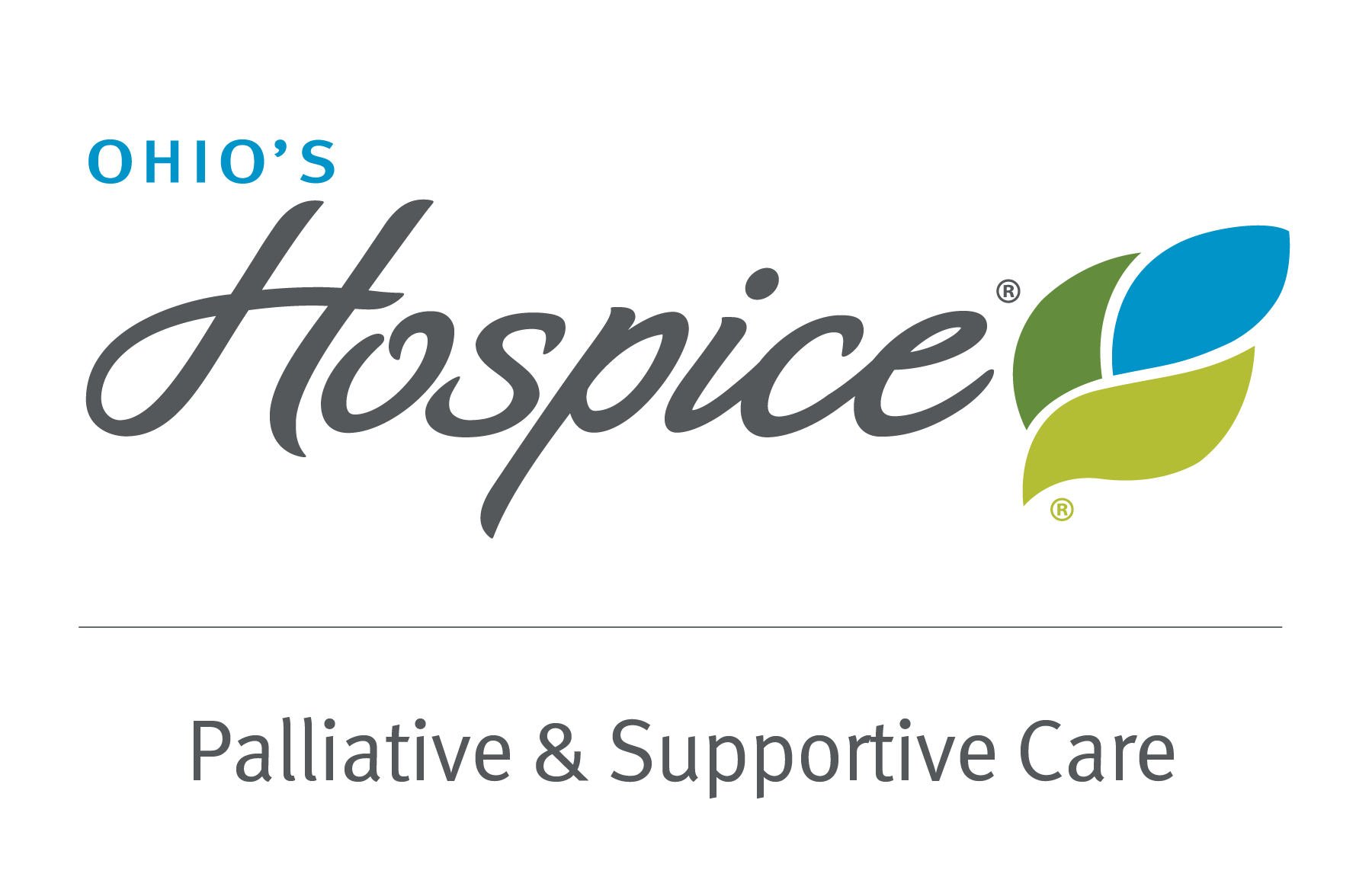Mindfulness: Paying Attention to Our Losses
As a psychiatrist, therapist and practitioner of mindfulness, I am often asked what mindfulness has to do with grief and loss. Most of us want to do anything but pay attention to our suffering. It’s not pleasant. Sometimes we just outright deny it. We’d almost always rather avoid it. Sometimes we avoid it to get through the day. That’s survival. But when days turn into weeks, months and years, a short-term survival strategy can become something that weighs us down. When avoidance becomes a long-term strategy, we can become disconnected from our humanity, the deepest parts of ourselves.

The practice of mindfulness is being intentional about where we put our attention. It’s about noticing things around you and within you. Our thoughts, feelings and sensations are always with us. But many of us are out of touch with them, often failing to acknowledge the richness of our own experiences.
Mindfulness is about tuning in rather than tuning out. Mindfulness can be considered a universal human capacity proposed to foster clear thinking and open heartedness.1 Historically a Buddhist practice, mindfulness requires no specific religious or spiritual framework. Mindfulness is simple — pay attention. While simple, mindfulness is not easy.
One simple way to do this is to take a deep breath. Pay attention to the air flowing in and the air flowing out. Pay attention to the rise and fall of your chest as your lungs fill with air and as you allow the air to leave. Notice the natural moment of pause at the end of your out breath. You can close your eyes or find a steady place to focus like a picture on the wall or the view outside your window. Tune in to the simple motion that sustains you every moment of every day.
However, in being mindful, we notice both pleasant and unpleasant experiences. Pleasant and unpleasant are both part of the human experience. We tend to naturally gravitate to pleasant experiences. Leaning into unpleasant experiences feels unnatural. The practice of mindfulness encourages us to pay attention to our experiences without judging them.
So often, we evaluate a thing or an experience as good or bad, shuttling it into categories such as what we “should” be feeling, thinking or noticing instead of just noticing. The tyranny of the “shoulds” takes us down the rabbit hole of judgment and anxiety because instantly we feel the need to be something other than what we are in this moment and in this place.
Mindfulness practice teaches us that this too shall pass. Our suffering will not last forever. It is here, and it is in the present moment. By taking the time to lean into it, we find that we are actually leaning through it, coming out on the other side and back to the present moment. Taking a moment to be mindful of what we are experiencing in the here and now can be a powerful tool for healing if we will use it.
And yet, so many people say things like, “I don’t have the time to practice mindfulness.” We spend so much time living mindlessly that sometimes pausing to pay attention feels overwhelming.
It is one more thing to add to the schedule. There is a common misconception that mindfulness requires extended meditative structure. It is true that this is the way some people practice mindfulness — by formally setting aside 30 minutes or an hour each day to pay attention. This is one way of practicing mindfulness.
But let me share a secret with you. Mindfulness is not necessarily something that you really need to set aside time to practice. While you may choose to set aside time or take a class to learn the skills of mindfulness, ultimately, one can do anything mindfully. You can practice mindfulness while washing the dishes, sitting down, walking, making dinner, and simply breathing. Mindfulness is about where you put your attention.
And so, in the presence of our loss, we can take a moment to pay attention. Take a deep breath, in through the nose and out through the mouth. Take a moment to notice what is going on in your mind and your body. Once you’ve done that, simply acknowledge whatever your experience is. It may be pleasant, or it may be unpleasant. But just acknowledge it. Don’t ignore it. Be kind to yourself.
Whatever you are feeling in this moment is simply that, your feelings in this moment. We all encounter losses in life — big and small ones, losses that threaten to overwhelm us, and losses that we seldom acknowledge. We encounter difficult situations, and we all struggle. It’s part of being human. No one is alone in that.
Remember our common humanity in that moment. Most anyone in the same situation would feel similar. If we feel overwhelmed, we may choose to pull back from the experience. In these moments, simple acts such as focusing again on the breath or on tuning in to the sensation of our feet on the floor, making a cup of tea, or petting the cat are powerful ways to care for ourselves, attending to what we need in that moment.
Mindfulness practice cannot eliminate our losses. It will not eliminate the sorrow that frequently comes in response to our losses. However, mindfulness can begin to shift our experience of our losses. It can help us to honor our losses. It can help us to honor ourselves. It can help us to heal.
References:
1. Ludwig, D. S. (2008). Mindfulness in Medicine. JAMA, 300(11), 1350. doi:10.1001/jama.300.11.1350
Additional Resources:
Kabat-Zinn, J. (1994). Wherever you go, there you are: Mindfulness meditation in everyday life. New York: Hyperion.
Kalanithi, P. (2016). When Breath Becomes Air. New York: Random House.
Mager, D. (2016, October 17). A Mindfulness-Based Approach to Healing from Loss. Retrieved March 30, 2021, from https://www.psychologytoday.com/us/blog/some-assembly-required/201610/mindfulness-based-approach-healing-loss
Neff, K. (2018, March 06). Compassion. Retrieved March 30, 2021, from https://self-compassion.org/
About the Author:
Valerie Houseknecht, MD, FAPA (she/her/hers) is a board-certified general adult psychiatrist who has been working with individuals to improve their mental health and well-being for more than 15 years. She has cared for a myriad of patients in the Dayton area in a variety of settings. Pragmatic by nature, she is conservative in diagnoses and a champion of psychotherapy. Her title has always been psychiatrist, but her roles have been clinician, teacher, adviser, researcher/author, administrator, and collaborator. She is passionate about reducing the suffering caused by mental illness and strives to improve the well-being of all patients and staff by providing collaborative care to bridge physical and mental health. Her professional interests include the interface of medical illness and mental health, mindfulness, group and individual therapy in medical settings, well-being and resilience in medical staff, the reduction of mental health stigma, and interprofessional education in healthcare.

